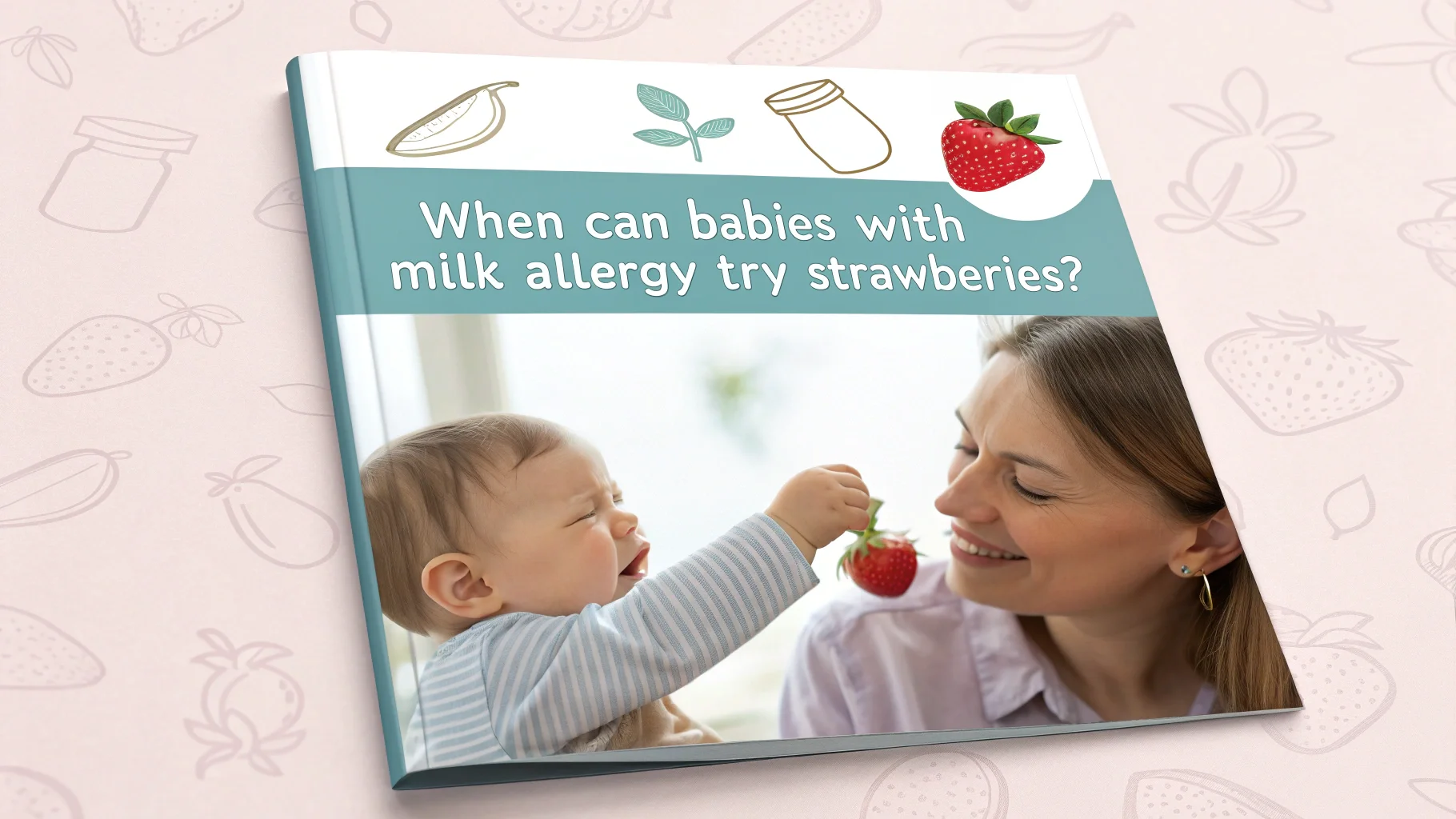As a mom whose little one was diagnosed with a milk allergy at three months old, I know firsthand how nerve-wracking it can be to introduce new foods. When my daughter reached six months, I found myself obsessively researching every new food, especially fruits like strawberries that can sometimes trigger reactions.
Today, I’m sharing everything I’ve learned about introducing strawberries to babies with milk allergies – both from my personal experience and from working closely with our pediatric allergist.
Understanding the Connection Between Milk Allergy and Other Foods
First, let’s clear up something important: having a milk allergy doesn’t automatically mean your baby will be allergic to strawberries. These are completely different types of allergens. However, babies with one food allergy may be at a higher risk of developing other allergies, which is why we need to be extra careful with introduction.
The Timing Question
The current medical consensus suggests that babies can try strawberries around:
- 6 months of age for most babies
- When they show signs of readiness for solid foods
- After successfully introducing a few other solid foods
- With your pediatrician’s approval, especially important for babies with existing allergies
Signs Your Baby Is Ready for Strawberries
Before introducing strawberries, look for these readiness signals:
- Can sit up with minimal support
- Shows interest in food
- Has good head and neck control
- Has already tried and tolerated other fruits
- Can move food to the back of their mouth
The Safe Introduction Process
When my daughter was ready to try strawberries, our allergist gave us a specific protocol. Here’s what worked for us:
Step 1: Preparation (Days Before)
- Choose fresh, ripe organic strawberries
- Thoroughly wash them to remove any potential dairy cross-contamination
- Have any necessary medications readily available (as advised by your doctor)
Step 2: The First Taste
- Start in the morning (never before bedtime)
- Begin with a tiny amount (1/4 teaspoon of pureed strawberry)
- Wait 15-20 minutes before offering more
- Watch closely for any reactions
Step 3: Gradual Increase
- Day 1: Single, small taste
- Day 2-3: Slightly larger amount if no reaction occurred
- Day 4-7: Gradually increase portion size
Potential Signs of Allergic Reaction
As someone who’s witnessed an allergic reaction, I can’t stress enough how important it is to know what to watch for:
Mild Symptoms
- Mild rash or hives around the mouth
- Slight redness of skin
- Minor itching
Severe Symptoms (Require Immediate Medical Attention)
- Difficulty breathing
- Swelling of face, lips, or tongue
- Severe vomiting
- Widespread hives
- Persistent coughing
Safe Preparation Methods

Here’s how I prepare strawberries for my little one:
For 6-9 Months
- Puree thoroughly
- Strain to remove seeds if needed
- Mix with previously tolerated foods
For 9-12 Months
- Finely mashed
- Cut into tiny pieces
- Remove tough stems
For 12+ Months
- Small, manageable pieces
- Quartered lengthwise
- Still supervised during eating
Cross-Contamination Concerns
When dealing with milk allergies, cross-contamination is a serious concern. Here’s what to watch for:
Common Sources of Dairy Cross-Contamination
- Shared cutting boards
- Unwashed hands after handling dairy products
- Restaurant-prepared fruits
- Pre-cut fruit packages
Tips from Our Journey
After months of navigating this journey, here are my top tips:
What Worked for Us
- Keeping a detailed food diary
- Taking photos of any skin reactions
- Introducing strawberries early in the day
- Having our pediatrician on speed dial
What to Avoid
- Mixed fruit purees until strawberry tolerance is confirmed
- Strawberry-flavored products (may contain hidden dairy)
- Introducing during illness or teething
- Testing new foods when traveling
Working with Your Healthcare Team
Your medical team is your best resource. Here’s how to make the most of their support:
Questions to Ask Your Doctor
- When is the best time to introduce strawberries?
- What emergency medications should we have on hand?
- How should we modify the introduction protocol given our baby’s milk allergy?
- What specific signs should we watch for?
Looking Ahead: Building Confidence
Remember, every baby’s journey is different. My daughter now happily enjoys strawberries as part of her regular diet, but it took time and patience to get here.
Long-term Strategies
- Keep detailed records of successful foods
- Gradually expand variety
- Stay informed about latest allergy research
- Join support groups for parents of children with food allergies
Final Thoughts and Next Steps
Introducing new foods to a baby with milk allergy requires extra care, but it’s absolutely manageable with the right approach. Start slow, stay vigilant, and celebrate each successful food introduction as the victory it is.
Remember this comforting truth: while the journey might seem overwhelming now, you’re building a foundation for your child’s healthy relationship with food, one careful step at a time.
Ready to start? Schedule a conversation with your pediatrician or allergist to create a personalized plan for introducing strawberries to your little one. Your careful attention now will pay off in expanded food choices for your baby’s future.


